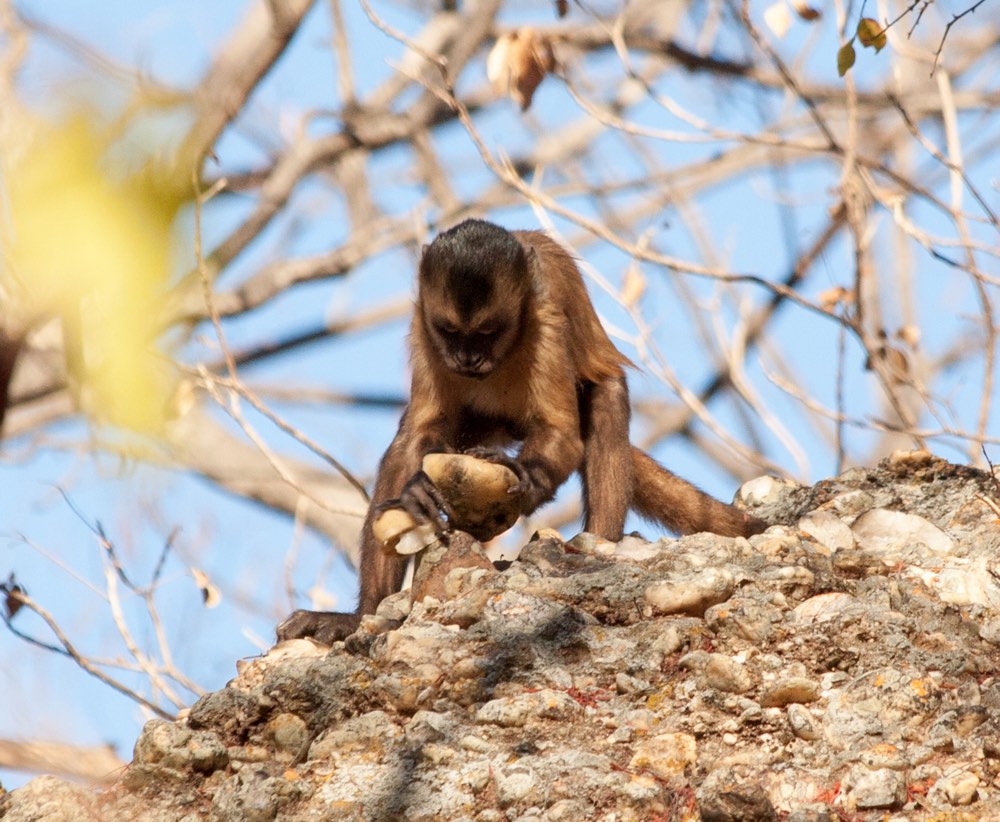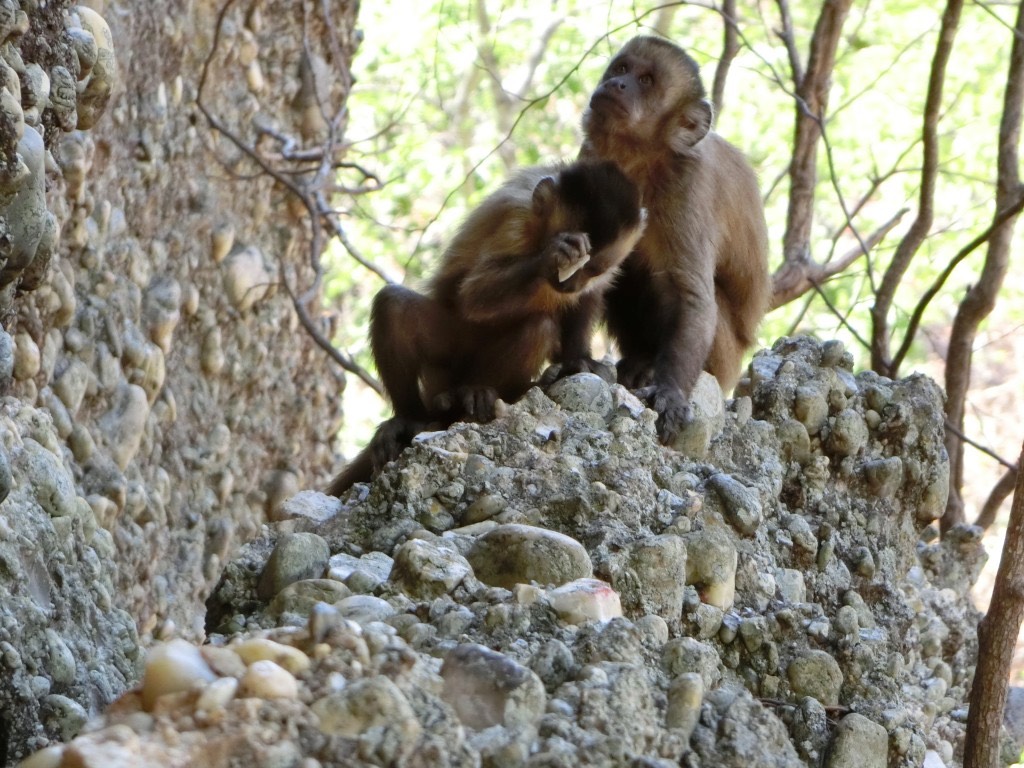Monkeys Break Rocks, Show Humans Aren't So Special

It's said that an infinite number of monkeys sitting at an infinite number of typewriters would eventually produce the works of Shakespeare. New research finds that a noninfinite number of monkeys holding a noninfinite number of rocks might at least produce something like stone tools.
Capuchin monkeys banging rocks against one another can accidentally make stones once thought to bear the telltale marks of a toolmaking human ancestor, researchers reported today (Oct. 19) in the journal Nature. This monkey behavior suggests that archaeologists need to be cautious about assuming that humankind's ancestors actually made real stone "tools."
"[T]he production of archaeologically identifiable [stone] flakes and cores, as currently defined, is no longer unique to the human lineage," the researchers wrote. [See Video of the Monkeys Turning Rocks into 'Tools']
Counterfeit choppers
The stones in question are simple, round cobbles with one end struck off, creating a single flat side. Archeologists call these stones "unifacial choppers" and can distinguish them by certain features that geological processes don't make. For example, the stones show scallop-shell-shaped breakages called conchoidal fractures, as well as signs of repeated chipping.
Earlier studies showed that chimpanzees and bonobos don't make choppers like this, even accidentally while using stones to break open nuts. Researchers thus have assumed that when they find unifacial choppers in the archaeological record, such stones are the work of hominins. That group consists of humans, their ancestors in the genus Homo and ancient cousins such as "Lucy," the Australopithecus who lived about 3.18 million years ago.
But new observations of capuchin monkeys in Brazil's Serra da Capivara National Park call that assumption into question. Researchers watched the capuchins bang rocks against one another, breaking the stones in the process.
The scientists said they aren't sure why the monkeys perform this behavior, but they did see the capuchins licking the rocks after breaking them. It's possible, the scientists wrote in Nature, that the capuchins are eating lichens or trace minerals from the rocks. The monkeys never use the broken rocks as tools to slice or cut. In a separate behavior, the same monkeys do use stones as hammers to smash nuts. [See Video of Capuchins Smashing Nuts with Stone Hammers]
Get the world’s most fascinating discoveries delivered straight to your inbox.
The researchers collected 111 rock fragments broken by the capuchins and analyzed the stones. They found no differences between the fragments split apart by monkeys and the archaeological unifacial choppers thought to be the sole domain of hominins.
Imitation tools?
"Within the last decade, studies have shown that the use and intentional production of sharp-edged flakes are not necessarily linked to early humans (the genus Homo) who are our direct relatives, but instead were used and produced by a wider range of hominins," study researcher Tomos Proffitt, a postdoctoral researcher in archaeology at the University of Oxford in the United Kingdom, said in a statement.
"However," Proffitt said, "this study goes one step further in showing that modern primates can produce archaeologically identifiable flakes and cores with features that we thought were unique to hominins."
This doesn't mean the stone tools found by archaeologists in East Africa, where human ancestors arose, weren't made by hominins, Proffitt said. But it does hint at the evolutionary origins of the behavior, while suggesting that this kind of toolmaking could have been more widespread than previously suspected, he said.
"These findings challenge previous ideas about the minimum level of cognitive and morphological complexity required to produce numerous conchoidal flakes," Proffitt said.
The fact that monkeys can make what looks like a stone tool, but isn't, throws "a bit of a spanner in the works in our thinking on evolutionary behavior," study author Michael Haslam, a primate archaeologist at the University of Oxford, said in the statement. Ultimately, the researchers concluded, the criteria that scientists use to attribute a chipped stone to hominin hands may need to be refined.
Original article on Live Science.

Stephanie Pappas is a contributing writer for Live Science, covering topics ranging from geoscience to archaeology to the human brain and behavior. She was previously a senior writer for Live Science but is now a freelancer based in Denver, Colorado, and regularly contributes to Scientific American and The Monitor, the monthly magazine of the American Psychological Association. Stephanie received a bachelor's degree in psychology from the University of South Carolina and a graduate certificate in science communication from the University of California, Santa Cruz.



